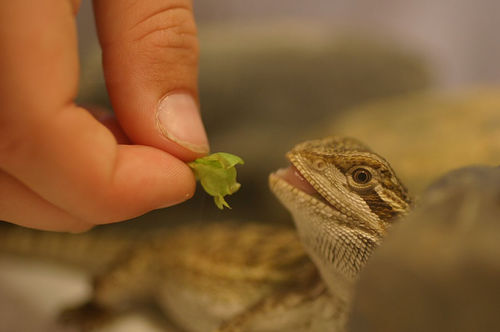Blood Bearded Dragon: The Ultimate Guide for Beginners
Blood Bearded Dragon: An Introduction for Beginners
Bearded dragons are one of the most popular choices when it comes to pet reptiles. They are easy to care for, friendly, and can be great pets for both beginners and experienced keepers. One particular type of bearded dragon that has caught the attention of many is the blood bearded dragon. In this article, we will tell you everything you need to know about why these lizards are so special and how to take care of them properly.
What is a Blood Bearded Dragon?
Blood bearded dragons are a unique color morph of the central bearded dragon species (Pogona vitticeps). Unlike traditional bearded dragon colors, blood bearded dragons have a deep red or orange-red coloring that fades to a pinkish or peachy color on their underside. They also have dark-colored eyes, making them look quite striking and exotic.

Why Choose a Blood Bearded Dragon as Your Pet?
Blood bearded dragons are a popular choice for pet reptile enthusiasts because of their unique coloration. They are also friendly, easy to handle, and relatively easy to care for, making them an ideal pet for beginners. They have a calm and docile temperament and are known for their relaxed and laid-back nature. They also enjoy human interaction and can become quite social with their owners.
How to Care for Your Blood Bearded Dragon
It is important to understand the basic care requirements for your blood bearded dragon before bringing one home. Proper care is essential for maintaining their health and longevity. Here are some tips to help you provide your pet blood bearded dragon with the best care possible:
1. Housing
Blood bearded dragons are active lizards and need adequate space to move around. A tank or enclosure that is at least 40 gallons in size is recommended for a single blood bearded dragon. You need to provide a basking spot, and the ambient temperature should be between 80-85°F during the day and around 70-75°F at night. This can be accomplished using a heat lamp or ceramic heat emitter. Make sure you provide a hiding place in the enclosure for the dragon to retreat into when it needs privacy.
2. Diet
Blood bearded dragons are omnivores and need a balanced diet that consists of both insects and vegetables. Insects like crickets, mealworms, and roaches are good sources of protein, while vegetables like kale, collard greens, and carrots provide vitamins and minerals. It is important to monitor the dragon’s diet to ensure that it is receiving the proper balance of nutrients.
3. Lighting
Blood bearded dragons need access to UVB lighting to help them produce vitamin D3, which is important for the absorption of calcium. Without it, they can develop metabolic bone disease, which can be fatal. It is essential to use a UVB bulb specifically designed for reptiles, and the bulb needs to be replaced every 6-12 months, as its effectiveness decreases over time.
4. Hygiene
Maintaining hygiene is important for your blood bearded dragon’s health. You need to clean their enclosure regularly and change their water daily. You should also clean any feeding dishes, hiding places, and other accessories in their enclosure. Keeping your pet clean and healthy is important for preventing diseases and infections.
Conclusion
Overall, blood bearded dragons are a unique and fascinating species that can make great pets for beginners. Their stunning coloration is just one of their many attractive qualities. With proper care, these lizards can live long, happy lives and provide you with plenty of joy and companionship. Follow the tips provided in this article to ensure that you give your blood bearded dragon the best care possible.
